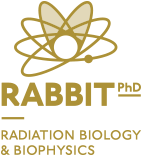






























Applied Cold Plasmas
Research Leader: Susana Sério
Labs: 123 and 126, Ed. 1
The Laboratory of Plasmas and Applications in the early years had an intense partnership with the industry, principally the development of electronic components for Portuguese VITROHM, solar panels with ECOCLIMAT and thin films for optics for the automotive industry with PALMEL lda, which led to important scientific and technological achievements.
Presently, studies are dedicated to the development of thin films of nanostructured oxides with potential technological applications, namely photocatalysts and electrodes for the degradation of pollutants in waste water by advanced oxidation processes and hybrid heterojunctions for the development of organic solar cells.
Since 2006, the group has also been dedicated to the optimization of parameters for surface treatment and aluminum deposition by magnetron sputtering of optical fibers for the LHC-ATLAS-CERN light detector and for hadronic therapy. This work has been carried out in close collaboration with the Laboratory of Instrumentation and Experimental Physics of Particles of Lisbon.
More recently, the LPA initiated studies in Plasma Medicine. In this field, the group activities deal with the development and optimization of Cold Atmospheric Plasmas devices (Plasma Jet and Floating Electrode Dielectric Barrier Discharge) for pathogen decontamination and therapeutic applications. The effectiveness of these sources is closely related to the number of active agents (chemical and physical) produced in plasma and to their controllability, which allow to the plasma technology the versatility required by biological applications. In particular, the LPA group is investigating the biocompatibility of surfaces regarding the application on orthopedic prostheses and the selective inactivation of cancer cells (skin cancer cells) towards the evaluation of this technology as an alternative for cancer treatment. Moreover, the LPA group is developing plasma sources optimized for these purposes and is looking for industrial partners with medium to long-term objectives in the field of advanced medical applications.
At University of Azores facilities, the studies in progress are related with the development and characterization of optical materials (glasses and amorphous thin films) by sol-gel processing and research in composite nanobiomaterials. This last topic is being carried out with a strong link to the laboratory of Plasmas and Applications at FCT/UNL and includes the study and characterization of plant fibers extracted from an invasive plant in the Azores (Hedychium gardnerianum) for reinforcement of polymer matrices and development of value added products. Also there are activities under progress related with the study of materials corrosion through the development of mathematical models by the theoretical group from Instituto Superior de Engenharia de Lisboa and study of atmospheric corrosion kinetics regarding the development of sol-gel coatings for metallic materials located in archipelagic regions at Azores.
The LPA actively participates in the training and supervision of masters students mainly from FCT/UNL: Integrated Master in Engineering Physics (MIEF) and Integrated Master in Biomedical Engineering (MIEB) and also supervision of PhD students from the international Radiation Biology and Biophysics Doctoral Training Programme - RABBIT hosted by CEFITEC - FCT/UNL.
Available Technologies:
- DC magnetron sputtering systems
- RF magnetron sputtering systems
- Dielectric Barrier Discharge
- Cold Atmospheric Plasmas: Jet Plasma and Floating Electrode Dielectric Barrier Discharge
- UV-vis spectroscopy
- Atomic Force Microscopy
fim



